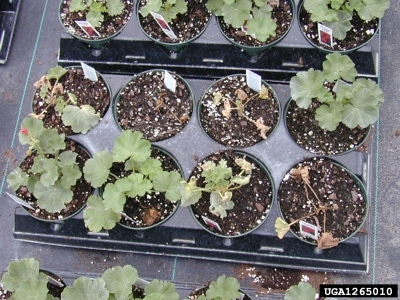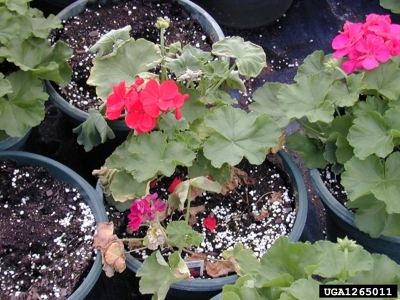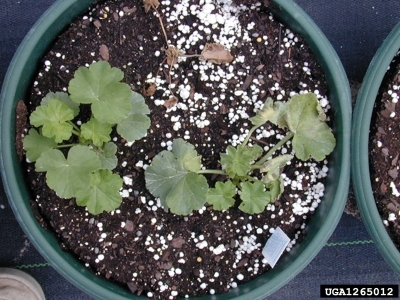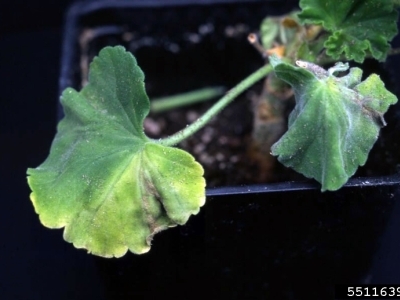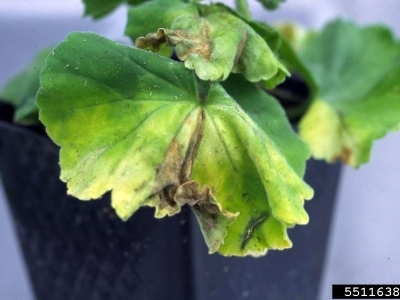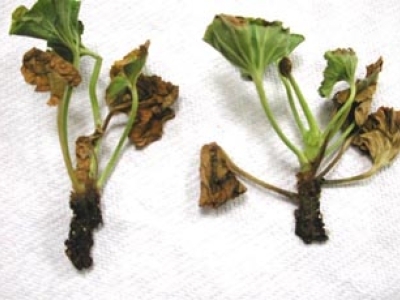Ralstonia Solanacearum Race 3 Biovar 2
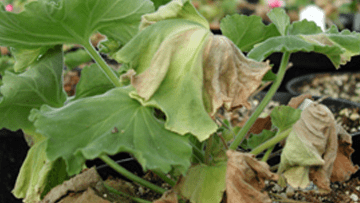
Ralstonia solanacearum is a bacterium that destroys the vascular system of plants, causing them to succumb to wilt disease. A soil-borne pathogen, R. solanacearum can harm more than 200 crop species, including tomatoes, potatoes, and eggplant.
There are five known races of R. solanacearum, but only race 1 is endemic to the United States. USDA considers R. solanacearum race 3 biovar 2 to be a select agent because the pathogen has the potential to pose a severe threat to plant health. It causes diseases such as brown rot of potato, bacterial wilt of tomato and eggplant, and southern wilt of geranium.
The following symptoms can typically be found on plants infected with R. solanacearum race 3 biovar 2:
Geraniums
- Yellow leaves
- A lack of chlorophyll, the green pigment that gives plants their color, is indicated by yellow, wedge-shaped areas on leaves.
- Wilting
- The plant is limp, appearing dry and droopy. The disease develops rapidly as wilting moves upward from older to younger leaves. Geraniums may appear to recover in cooler night temperatures.
- Dead tissue
- Usually, issues begin in a localized area of a plant — such as the tips of leaves or the ends of roots — and spread. Dead cells can turn parts of a plant brown or black.
- Stem collapse
- This can occur during later stages of disease. Stems, particularly where the below ground and above ground parts of a tree meet, and roots have vascular discoloration, which can blacken and eventually die.
Tomatoes and Potatoes
- Wilting
- Early symptoms occur on the youngest leaves during the hottest time of the day. Wilting may be limited to the top portion of the plant on just one side of a leaflet or an individual branch. Plants may appear to recover following rain or when temperatures cool down at night.
- Infected tomato plants often develop unusual roots on the lower stem and can die within 4–7 days after the first appearance of wilting.
- Leaves
- Leaves can wither, but dried leaves remain green.
- Stems
- When disease develops very rapidly, ooze may appear on the surface of intact stems.
- Infected stems may collapse, revealing brown tissue displayed as narrow, dark brown streaks with grey-white bacterial ooze.
- Color
- In symptomatic potatoes, the vascular ring turns a grey-brown color that may extend into the pith or cortex as the infection progresses.
- When infected potatoes are cut open, they ooze a milky-white sticky fluid. Visible threads may form from the ooze when the two sides of a cut potato are pressed together and then pulled apart. This ooze may also cause dirt to adhere to potatoes.
- Bacterial streaming
- A common diagnostic sign is bacterial streaming, which occurs when freshly cut stems from infected plants are placed in water. Fine, milky white strands of a thick, sticky white slime containing bacteria often run from the cut end of the stem within 15 minutes.
View photos of symptoms on geraniums, tomato and potato plants, potato tubers, and wild plants in our gallery.
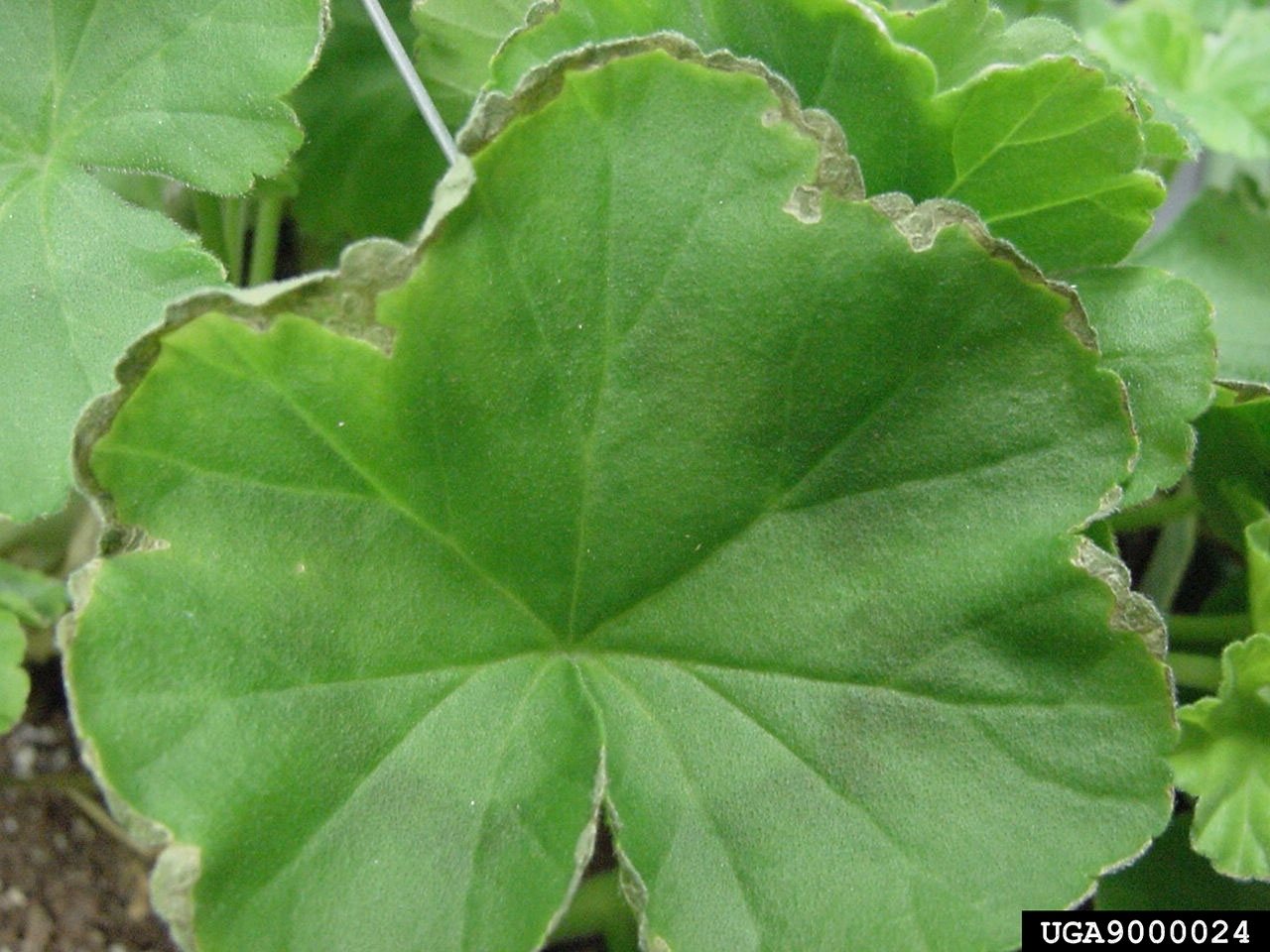
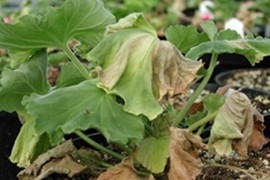

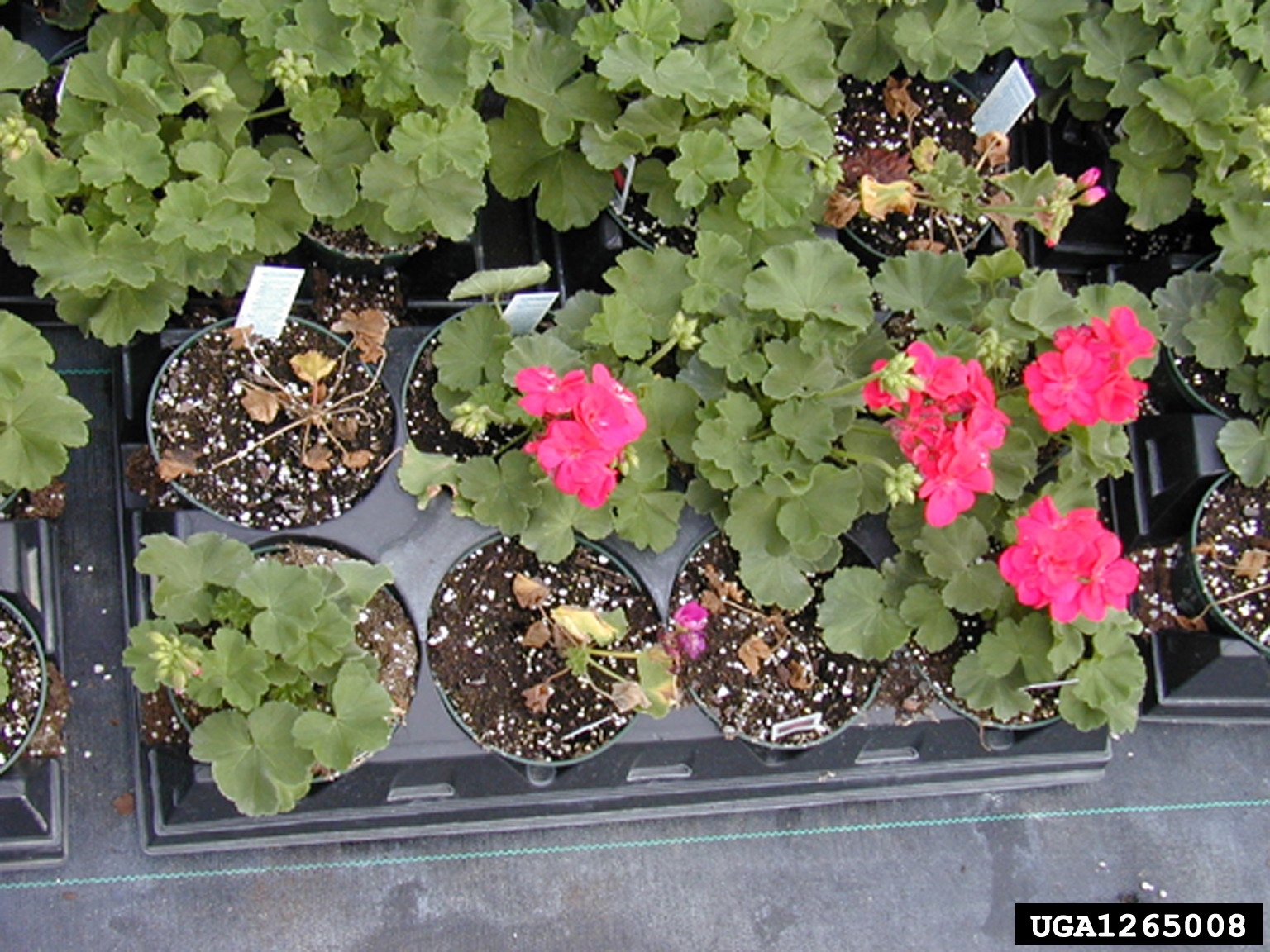







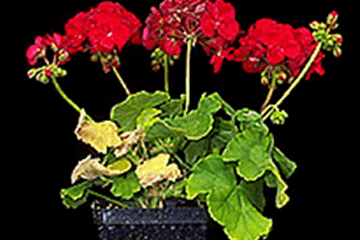
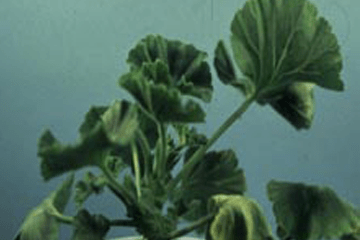
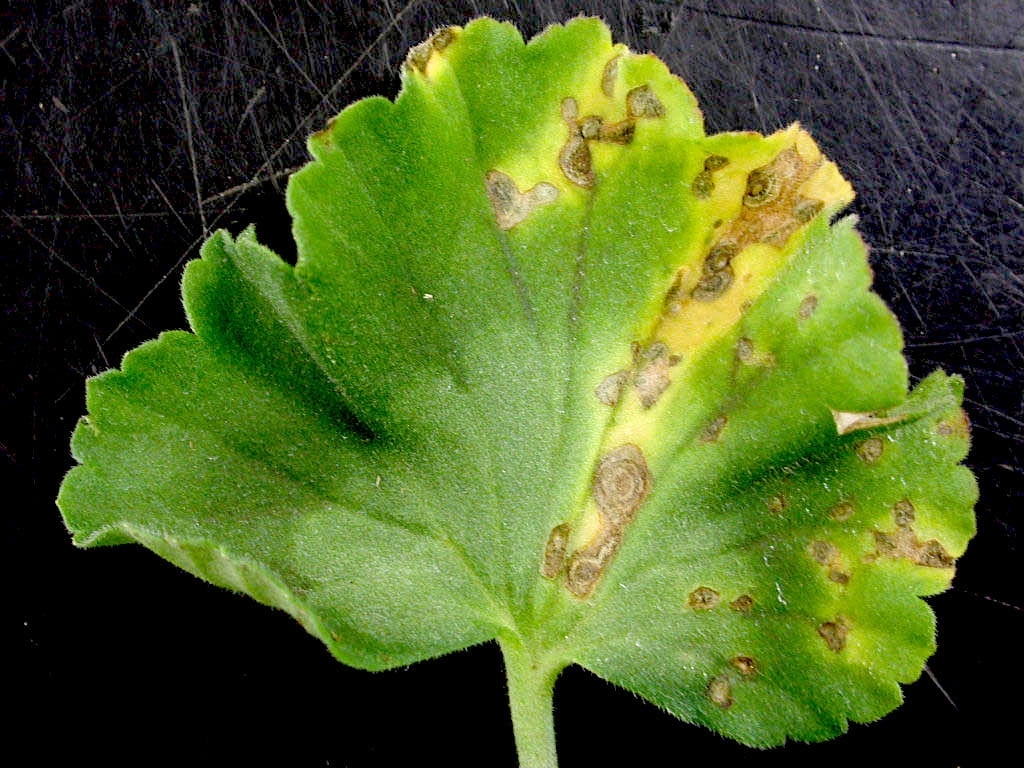
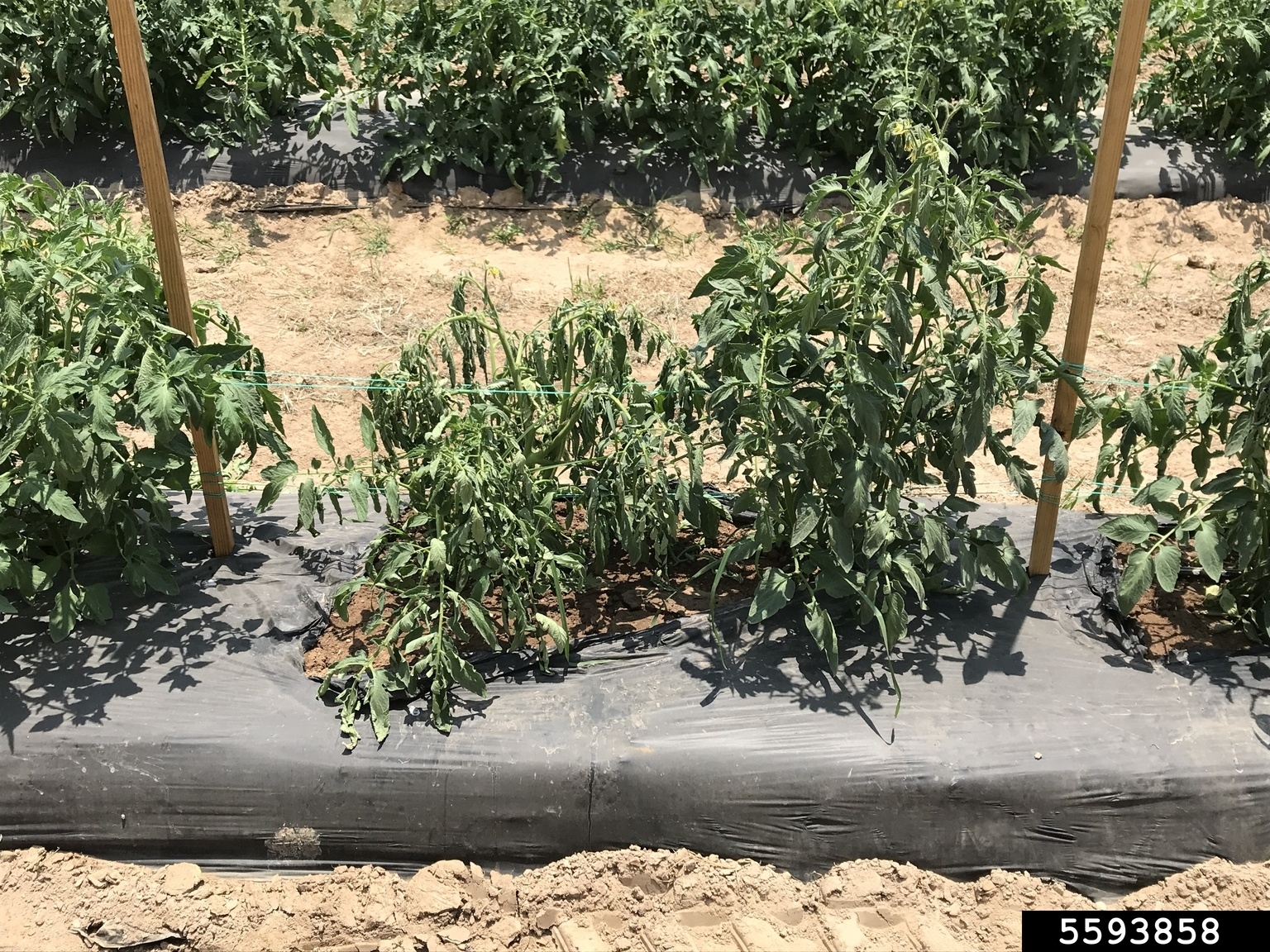
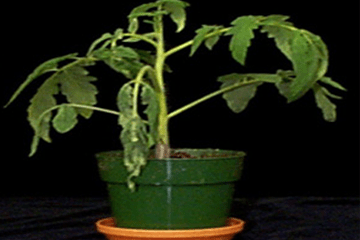
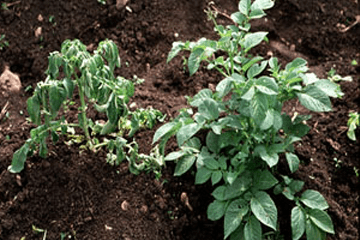


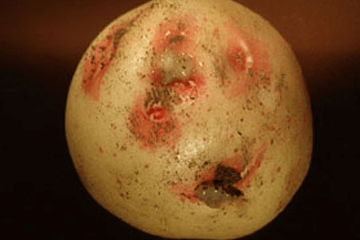

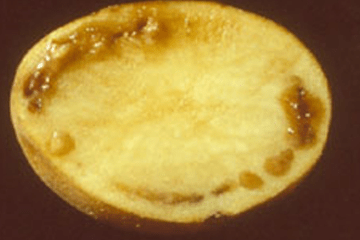
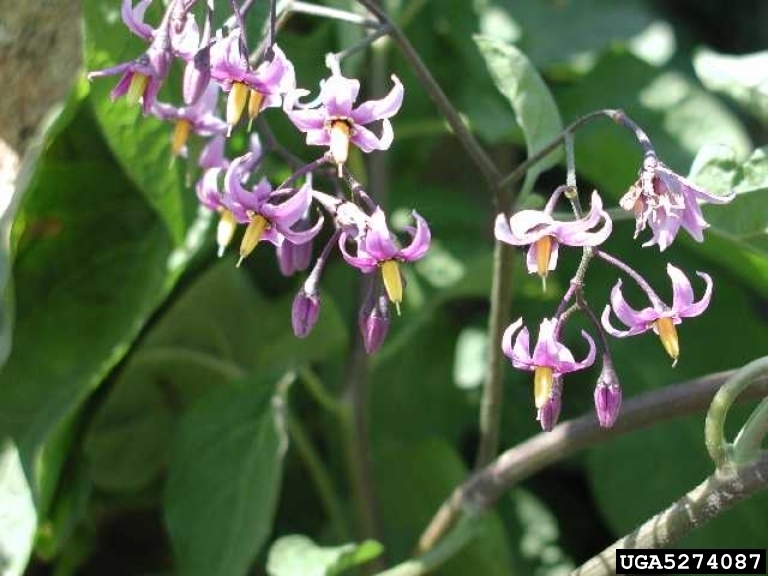



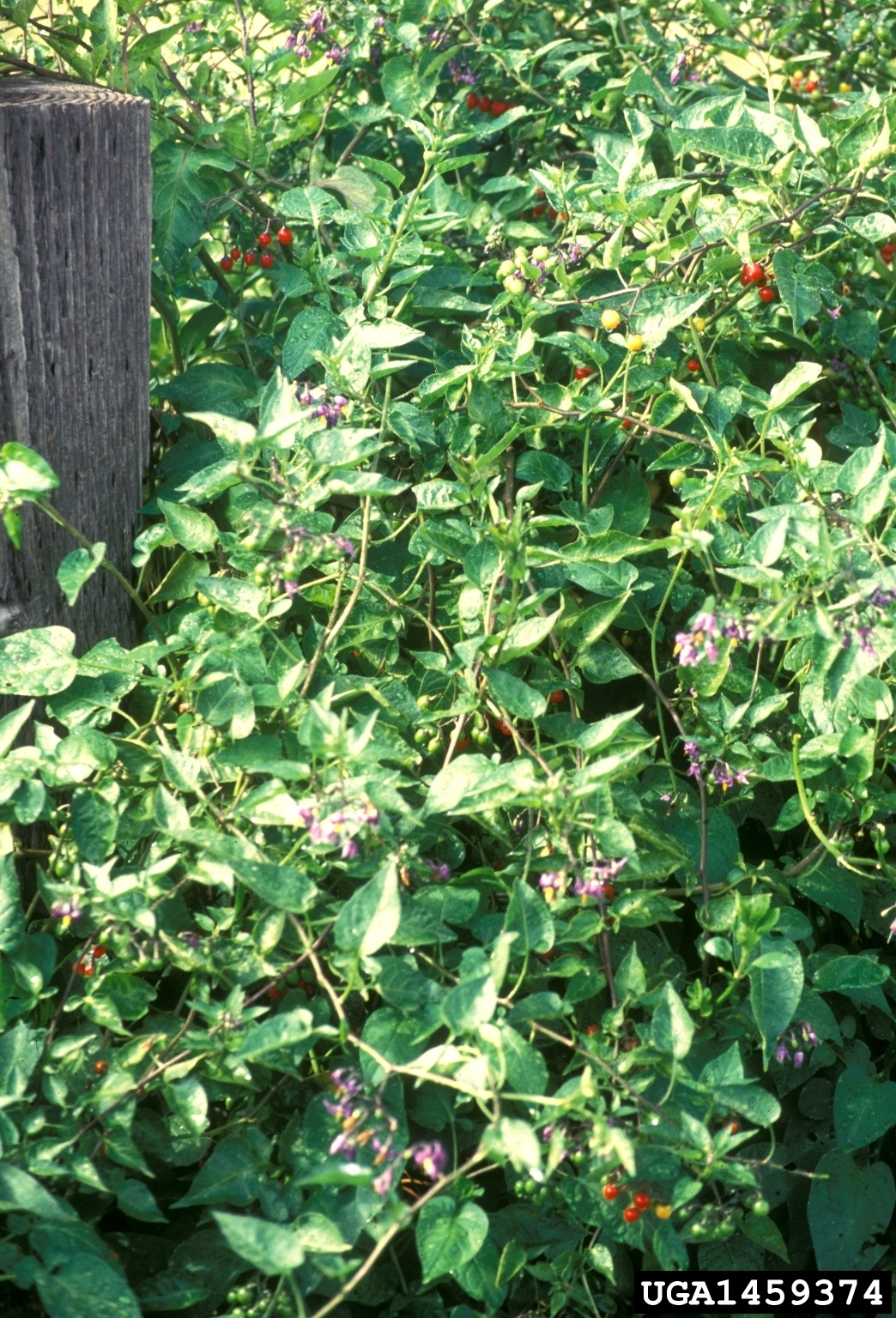

Early wilting symptoms. Photo by Jean L. Williams-Woodward, University of Georgia, Bugwood.org.
Advanced wilting and abnormal leaf yellowing symptoms, chlorosis. Photo by the Wisconsin Department of Agriculture, Trade and Consumer Protection.
Group of geraniums showing wilting symptoms. Photo by USDA APHIS PPQ, Bugwood.org.
Wilting and mortality of Americana Cherry Rose variety. Photo by USDA APHIS PPQ, Bugwood.org.
Wilting, chlorosis and necrosis due to Ralstonia solanacearum infection of geranium. Photo by USDA APHIS PPQ, Bugwood.org.
One plant has been killed by Ralstonia solanacearum and another is showing early wilt symptoms in this 10-inch basket. Photo by USDA APHIS PPQ, Bugwood.org.
Wilt on zonal geranium due to infection by Ralstonia solanacearum. Photo by Jean L. Williams-Woodward, University of Georgia, Bugwood.org.
A geranium with several leaves showing wilting with associated chlorosis and necrosis due to Ralstonia solanacearum. Photo by Margery Daughtrey, Cornell University, Bugwood.org.
A close up of the chlorosis and necrosis that develop in geranium leaves wilting from Ralstonia solanacearum infection. [Photo by Margery Daughtrey, Cornell University, Bugwood.org.
Yellowing symptom (chlorosis) of Americana Pink II variety. Photo by USDA APHIS PPQ, Bugwood.org.
These unrooted cuttings show necrosis of the lower leaves and black stem necrosis due to infection by Ralstonia solanacearum. Photo by Margery Daughtrey, Cornell University.
Abnormal yellowing symptoms. Photo by the Plant Disease Diagnostics Clinic, University of Wisconsin-Madison/Extension.
Wilting symptoms caused by Bacterial Blight, Xanthomonas pelargonii, are indistinguishable from wilting symptoms caused by Ralstonia solanacearum. Photo by Margery Daughtrey, Cornell University.
Bacterial Blight, Xanthomonas pelargonii, also causes characteristic spotting of leaf tissue. Photo by Margery Daughtrey, Cornell University.
Wilting symptoms in tomato plants infected with Ralstonia solanacearum race 1 biovar 1. Photo by Rebecca A. Melanson, Mississippi State University Extension, Bugwood.org.
Close up of early wilting symptoms in a tomato plant caused by Ralstonia solanacearum race 1 biovar 1. Photo by Caitilyn Allen, University of Wisconsin.
Potato plants, one showing wilting symptoms due to infection by Ralstonia solanacearum. Photo by the International Potato Center, Lima, Peru.
Partial wilt of a potato plant caused by Ralstonia solanacearum. Photo by the Central Science Laboratory, York, United Kingdom.
Beginnings of symptoms shown by Ralstonia solanacearum in a potato tuber. Photo by Ministry of Agricuilture and Rural Affairs, Bugwood.org.
Symptoms of Ralstonia solanacerum on potato tuber. Photo by the International Potato Center, Lima, Peru.
Cross section showing symptoms of early tuber infection by Ralstonia solanacearum. Photo by the International Potato Center, Lima, Peru.
Cross section of a tuber showing more advanced infection by Ralstonia solanacearum. Photo by the International Potato Center, Lima, Peru.
A common weed in many parts of the United States is climbing nightshade, Solanum dulcamara. It is a symptomless host of Ralstonia solanacearum that typically grows along water courses. Photo by Leslie J. Mehrhoff, University of Connecticut, Bugwood.org.
Closeup of Solanum dulcamara's curved purple flowers with bright yellow stamens. On rare occasions, the flowers are white. Photo by David Cappaert, Bugwood.org.
In Europe, Solanum dulcamara is known as bittersweet, and is the main pathway for Ralstonia solanacearum race 3 biovar 2 infection from contaminated water courses into potato fields. Photo by Leslie J. Mehrhoff, University of Connecticut, Bugwood.org.
Close up of a Solanum dulcamara stem with fruit. Photo by Steve Dewey, Utah State University, Bugwood.org.
Solanum dulcamara grows in a wide range of habitats, from woodland to scrubland, hedges and wetlands, and is often found in close proximity to agricultural land. Photo by Ministry of Agriculture and Rural Affairs, Bugwood.org.
The smaller leaves are oval shaped with a pointed tip and the larger leaves tend to have three lobes. Photo by Steve Dewey, Utah State University, Bugwood.org.
Prevention is critical, as there is no effective chemical control for R. solanacearum race 3 biovar 2. Geranium growers should purchase clean cuttings, label, and separate geranium varieties, and avoid using subirrigation systems in greenhouses. Greenhouse workers should wear gloves or wash hands as they handle different geraniums and use footbath stations as they move from greenhouse to greenhouse. Potato growers should start with certified seed potatoes to avoid R. solanacearum race 3 biovar 2.
Growers should not attempt to treat R. solanacearum race 3 biovar 2 on their own. If you suspect your plants are infected, immediately contact the nearest APHIS office or your State department agriculture. They will provide plant handling and treatment instructions.
Report Plant Pests and Diseases
Have you seen this pest or signs of pest damage? Immediately report your findings. Diagnostic labs that detect R. solanacearum must follow USDA Select Agent reporting regulations.
Find your State plant regulatory official
Find your State plant health director
Controlling R. solanacearum race 3 biovar 2
R. solanacearum is a Select Agent. Diagnostic labs that detect R. solanacearum must follow USDA Select Agent regulations.
New Pest Response Guidelines (2.3 MB)
Ralstonia Exclusion Program
In 2024, APHIS implemented an updated certification program for R. solanacearum race 3 biovar 2 host plants imported to the United States. The program requires specific phytosanitary practices and regular testing in offshore greenhouses. Shipments must also be accompanied by a phytosanitary certificate with an additional declaration attesting that the plants have been tested and are free of R. solanacearum race 3 biovar 2.
See also USDA Select Agent regulations




